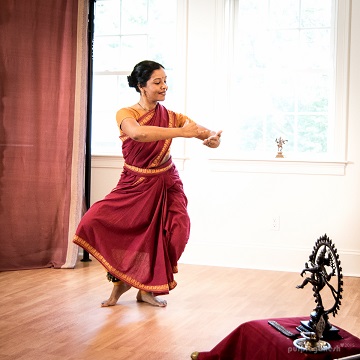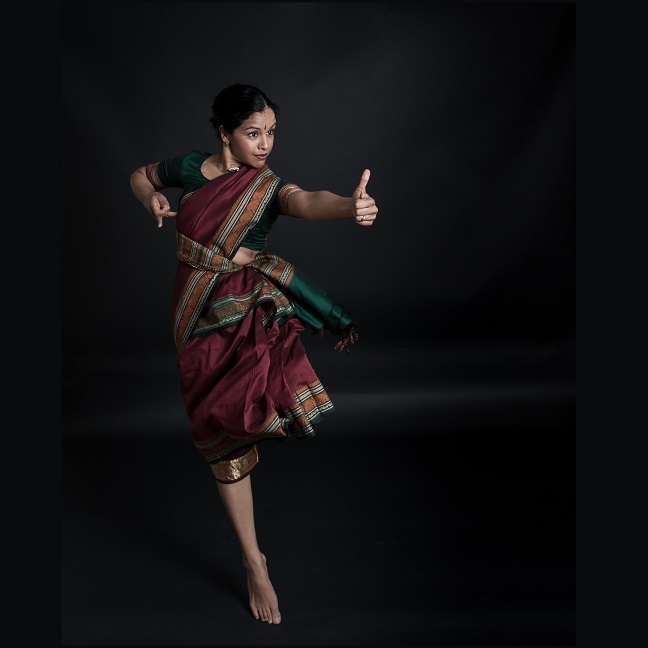Contribute
| NaTya In Bharatanatyam |
Sangeetha Prasanna
02/15/2017
When Lord Brahma created 'Natyaveda' as the fifth Veda, his purpose was to craft a Veda that would be easily understood by people universally. He imparted it to Sage Bharata who in turn passed it on to his 100 sons to carry it forward. This is the story that became the basis for the rich, artistic work of the literary treatise 'Natya Shastra' that till date serves as the foundation manual for theater and dance in Indian culture. It was against this backdrop of Natya Shastra that Smitha Radhakrishnan presented her recital themed 'NATya : Exploring theater in dance' for Spanda school of dance and creative arts monthly program on January 27th 2017 in Acton, MA. Dressed in a colorful skirt, black top and shawl, Smitha began her recital, depicting a girl who is awakened from her sleep recounting the dream of Bharatamuni and his directive to her to spread Natyashastra. We then see her attending a Bhartanatyam class and performing the famous shabdam 'Sarasijakshulu'. Krishna's mischief and the gopi's reactions were beautifully portrayed by Smitha in this evergreen piece. This served as an appropriate start since Shabdam is the first piece of abhinayam using a bit of theatrics to tell stories in a simple and straightforward manner. The heroine then proceeds to spend time with her niece ( Medha) who asks her to enact 'Snow White and the Seven Dwarfs', the famous Grimm's fairy tale, instead of reading it. All characters in the story came alive in Smitha's portrayal, especially the 'Dwarves'. With a simple voice-over to the accompaniment of flute, this piece was an instant hit with the children and adults present at the show. It cleverly showed how Bharatanatyam can be adapted in storytelling and is an effective narrative tool. Smitha continued her recital with a story from 'Durga Mahatmiyam', along with Usha Narayana. The portrayal of a calamitous world, Devas and Asuras fighting, Durga taking on the power of Kali, destruction of Mahishasura and Durga returning to her serene form thereby bringing peace to the universe were some of the highlights of this item. Simple narration with instrumental background helped bring out the story effectually. Intelligent use of stage space, Kalari movements and fast paced adavus made the item interesting and lively. In contrast to the earlier fast paced number, the next piece was a shlokam from 'Krishna Karnamrutham' depicting the story of baby Krishna when he asks his mother 'Why can't I drink milk whenever I want?' She portrayed the conversation between mother and child in an endearing manner. Piece de resistance of the show was a scene from Toni Morrison's famous work 'Beloved'. Smitha beautifully captured the scene of Sethe, the runaway slave girl delivering her baby by the river and her joy in seeing nature surrounding her come to life. Pregnancy, child birth, and the description of fern spores to show rebirth in nature were wonderfully enacted. The shawl that draped the shoulders of Sethe, became the baby and a clever mix of daily activities with animated story telling brought the scene alive. Smitha concluded her recital with a fusion based pure dance number performed along with Usha. Fast paced adavus to the musical beats of Sitar served as a perfect end to the program. On the whole it was an effective incorporation of Bharatanatyam and theater resulting in a satisfying performance. Link to the Dance Clipping: https://www.youtube.com/watch?v=UI3TodMeCZs&feature=youtu.be
You may also access this article through our web-site http://www.lokvani.com/

